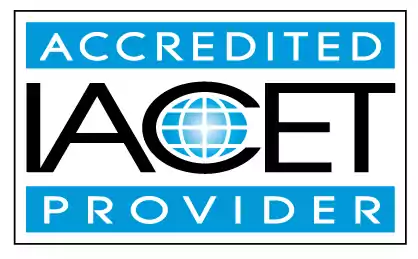Identify specific techniques to help children cope with divorce and separation.
Learn effective techniques to help children cope with divorce and separation. Discover appropriate practices for identifying and demonstrating individual planning, emphasizing the importance of early childhood education and child care centers.Trainings incorporating this outcome
Proficiency Level
Price
States
Alabama (1) Alaska (1) Alberta (1) Arizona (1) Australia (1) California (1) Colorado (1) Connecticut (1) Delaware (1) District of Columbia (1) Florida (1) Georgia (1) Hawaii (1) Idaho (1) Indiana (1) Iowa (1) Jamaica (1) Kansas (1) Louisiana (1) Maine (1) Manitoba (1) Maryland (1) Massachusetts (1) Michigan (1) Mississippi (1) Montana (1) Nebraska (1) Nevada (1) New Hampshire (1) New Jersey (1) New Mexico (1) New York (1) Newfoundland and Labrador (1) North Dakota (1) Nova Scotia (1) Ohio (1) Oklahoma (1) Oregon (1) Prince Edward Island (1) Puerto Rico (1) Quebec (1) Rhode Island (1) Saskatchewan (1) South Carolina (1) South Dakota (1) Tennessee (1) Texas (1) Thailand (1) United Kingdom (1) Utah (1) Vermont (1) Virgin Islands (1) Virginia (1) Washington (1) West Virginia (1) Wyoming (1)
2 hours courses
 0.2 CEUs
0.2 CEUs online
4.3/5
Related Outcomes
- Identify appropriate practices for identify and demonstrate an children: Identify examples of appropriate activities for different ages
- Identify appropriate practices for identify and demonstrate an children: Identify importance of individual planning
- Identify signs of distress in children and families experiencing divorce or separation.
- Identify ways to help parents and infants/toddlers handle separation and attachment
- Identify curriculums specific to children birth through age three
- Identify strategies for the child care provider that will promote successful child development. Identify strategies for working with children with special needs
- Identify resources to help children discover, learn, and experience in a natural play environment.
- Identify ways to help parents and infants/toddlers handle separation and attachment.
- Explain how divorce and separation affect young children.
- Identify common interaction strategies to help promote a positive classroom environment for young children.
- Define resilience and identify ways it helps young children overcome toxic stressors.
- Identify curriculums specific to children birth through age 3
- Identify appropriate practices for identify and demonstrate an children: components of a lesson plan
- Identify appropriate practices for identify and demonstrate an children: Teacher directed vs child directed
- Identify appropriate practices for identify and demonstrate an children: Define Developmentally Appropriate Practice
- Identify adaptations to materials and equipment for children with diagnosed special needs or delay
- Identify curriculum and activity resources specific to school-age child care.
- Identify the most common sources of stress for young children.
- List recommended feeding schedules and identify strategies for introducing new food for children birth through age three.
- Identify strategies for working with children with special needs.
Related Articles
- Understanding Why Toddlers Bite
- Supporting Your Child’s Emotional Well-Being During the School Year
- Surviving Toddler Tantrums: A Guide for Parents Who Secretly Wonder If Their Kids Have a Future in Drama
- The Emotional First Aid Kit for kids: Grounding Techniques, Calming Exercises, and Comforting Words
- Teaching Kids to Become Emotional Heroes through Body Awareness
- Big feelings: Teaching Kids to Manage Difficult Emotions
- Fostering Positive Social Skills in Children: Tips for Childcare Providers
- Fostering Resilience in Children: A Key Role for Child Care Providers
- Helping Your Child Navigate the Flashbacks and Triggers of PTSD
- When the Sunshine Fades: How to Spot Depression in the Happiest-Looking Kids
- Trauma and Tantrums: How Stress Shapes Behavior (and How to Help)
- Is Trauma the Same for All Children?
- How to Handle Separation Anxiety in New Preschoolers: A Teacher's Guide
- New Year, Fewer Tantrums: Tips for Building Strong Parent-Educator Partnerships in 2025
- Party Hats and Emotional Regulation: Helping Little Ones Navigate Big New Year Feelings
- Trauma-Informed Care Strategies for a Calmer 2025 Classroom
- From Tears to Cheers: How to Tackle Drop-Off Drama Like a Pro
- Emotions in Motion: Teaching SEL & Emotional Regulation to Preschoolers
- Understanding Separation Anxiety in Young Children